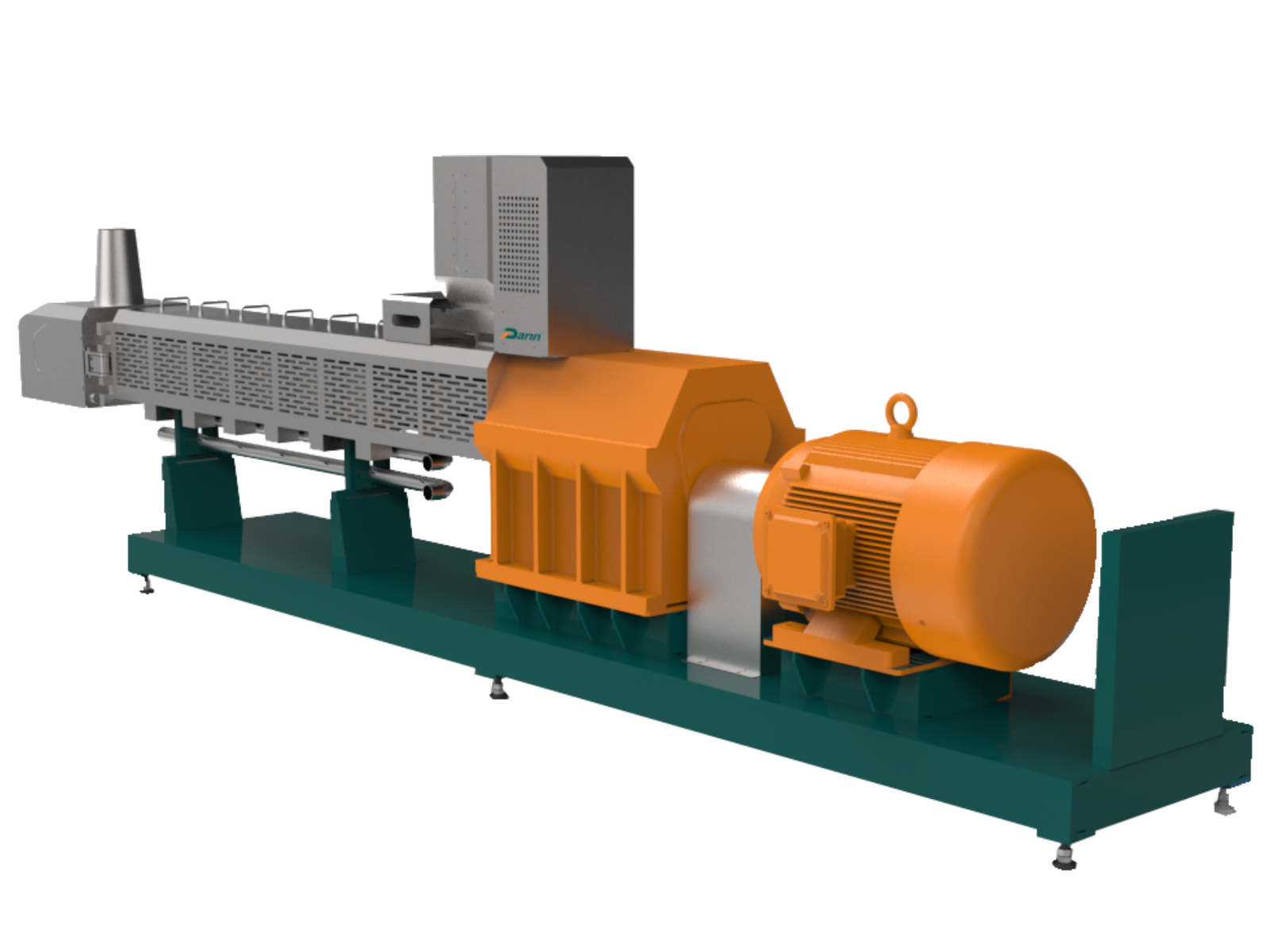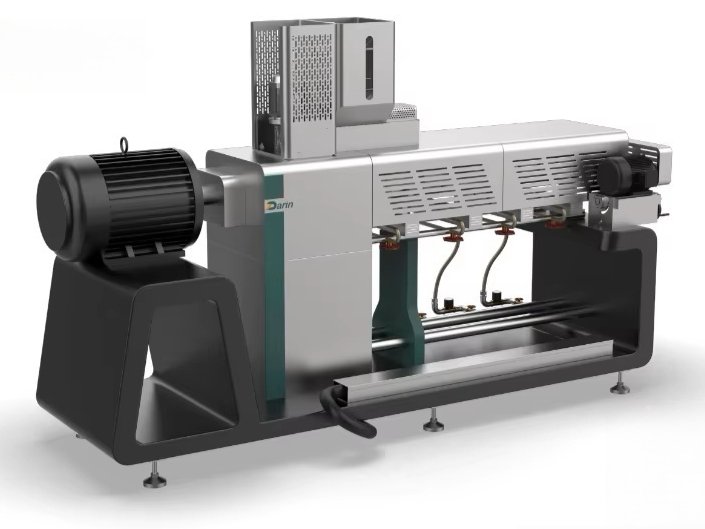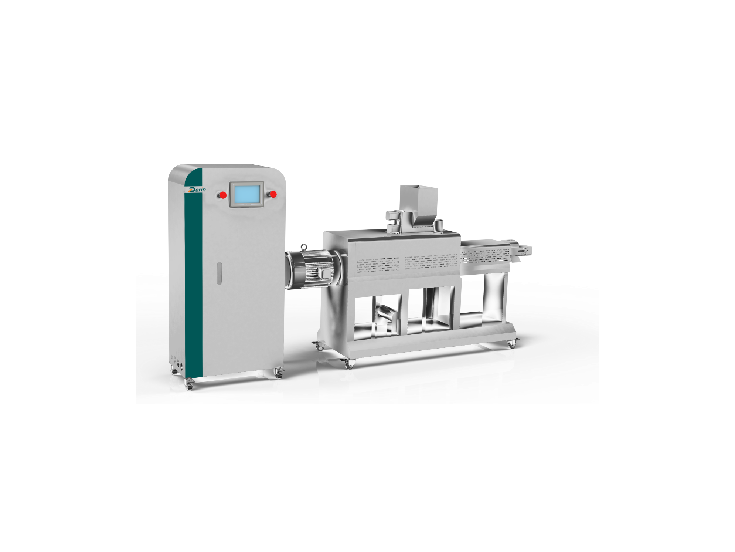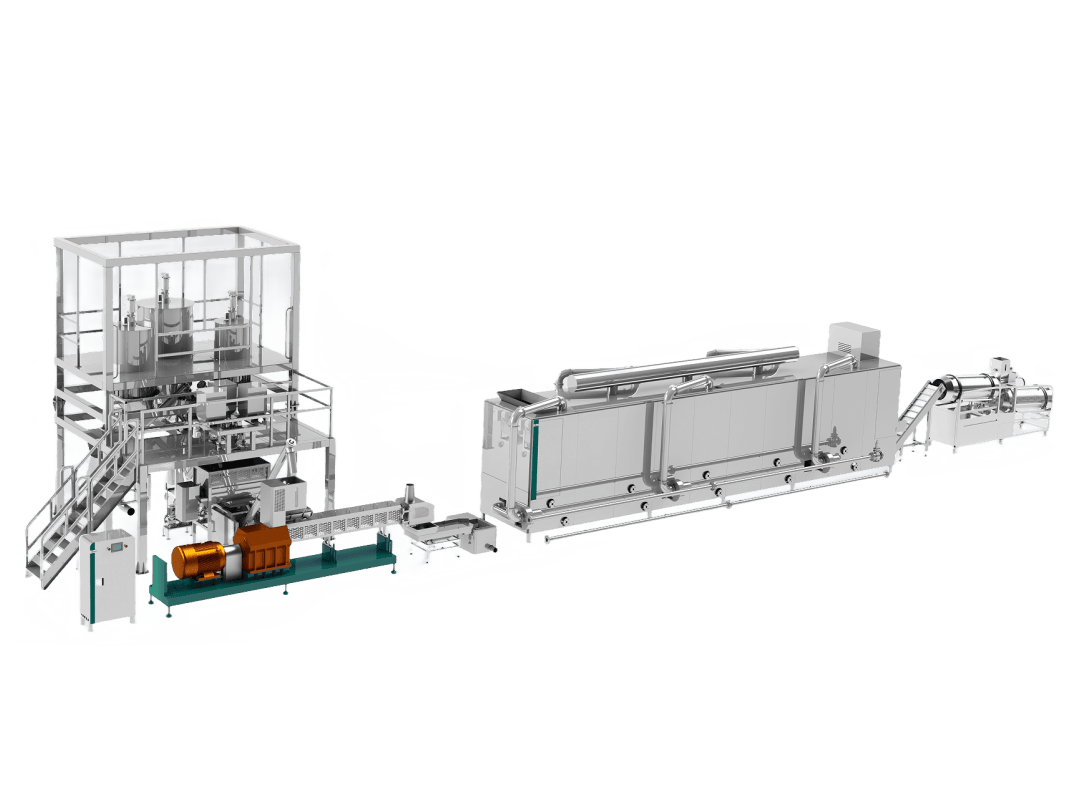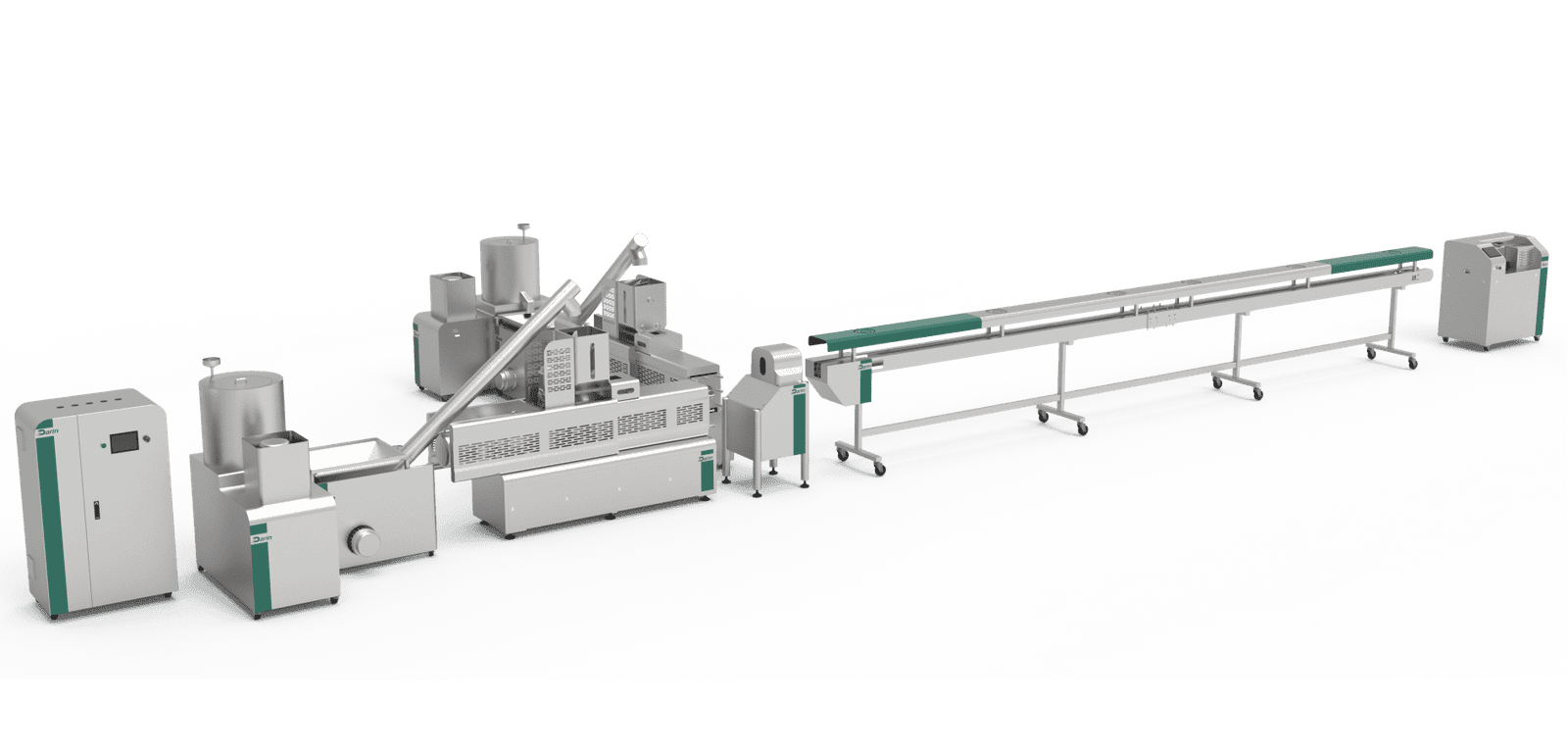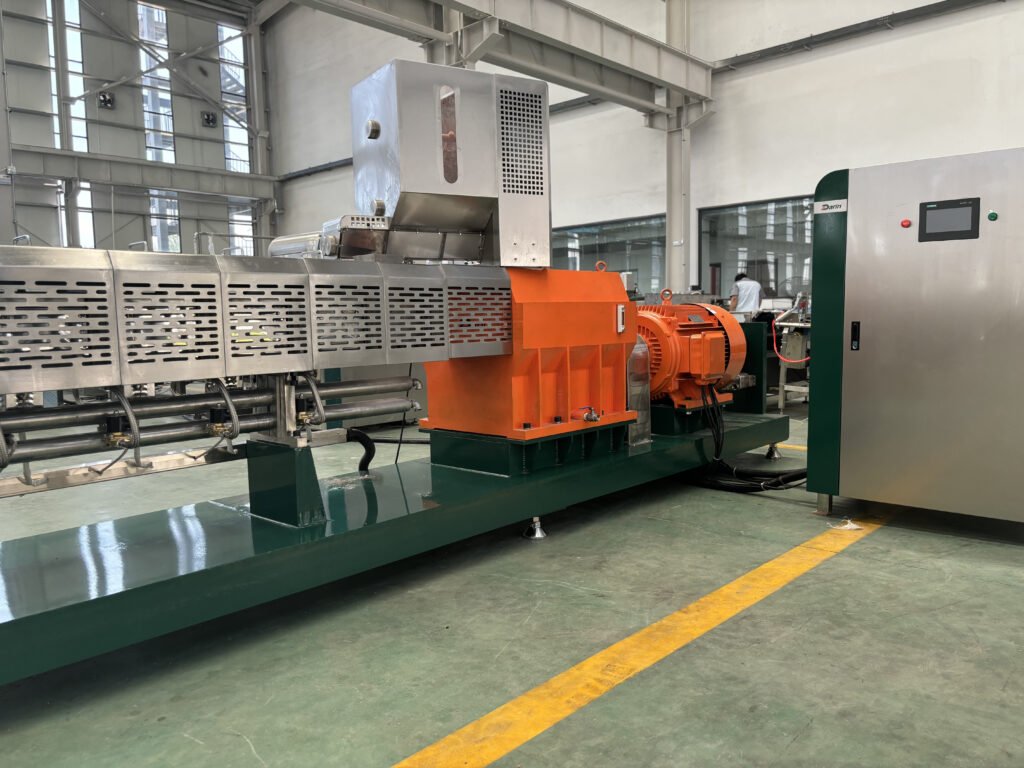
In the pet food manufacturing industry, achieving consistent, safe, and nutritious products hinges heavily on one critical machine: the pet food extruder. But many manufacturers face the challenge of inconsistent kibble shape, density, or nutritional degradation—issues that often lead to high rejection rates, customer complaints, and brand damage. The root of these issues typically lies not in the ingredients but in the extruder used. Choosing the wrong extruder type or design for your application can cause uneven cooking, poor product texture, or even contamination risks. However, the right pet food extruder, properly matched to your specific formulation and production needs, can dramatically improve product quality, consistency, and efficiency. This article reveals exactly how your extruder choice impacts your final product—and how to make the right one.
The choice of pet food extruder directly influences product quality by controlling the cooking, shaping, and texturizing process. High-quality extruders ensure consistent thermal and mechanical energy input, which determines the nutritional integrity, digestibility, moisture content, kibble shape, and shelf stability of the final product. Twin-screw extruders offer superior versatility and control compared to single-screw models, making them ideal for high-protein or premium formulations.
As a manufacturer or supplier aiming to maintain high-quality standards, understanding the technical capabilities and limitations of different extruder types is key. Not all extruders perform equally—factors like screw configuration, barrel length-to-diameter ratio, control precision, and die selection each play a vital role in shaping the finished product. Keep reading to learn how to strategically select or upgrade your extrusion technology to optimize pet food quality and maintain competitive advantage.
The type of pet food extruder significantly affects final product quality.True
Extruder design influences heat and shear levels, which directly affect the product’s structure, digestibility, and nutritional preservation.
Understanding Pet Food Extrusion Technology and Its Impact on Product Quality
Pet food extrusion is a thermal-mechanical process that transforms raw materials—primarily proteins, starches, and fats—into a cooked, shaped, and shelf-stable product. The extruder acts like a continuous high-pressure cooker and shaper. As ingredients are fed into the barrel, they are mixed, compressed, heated, and sheared through one or more rotating screws. The combination of heat, pressure, and mechanical energy causes the material to gelatinize, cook, expand, and ultimately take shape as it exits through a die.
Types of Extruders and Their Characteristics
| Type of Extruder | Screw Design | Ideal For | Pros | Cons |
|---|---|---|---|---|
| Single-Screw Extruder | One screw | Simple, starch-rich recipes | Lower cost, easier maintenance | Limited process flexibility, less control over shear/heat |
| Twin-Screw Extruder | Two intermeshing screws | Complex, high-protein, or high-fat formulations | Greater control, uniform mixing, better cooking control | Higher cost, more complex operation |
| Co-Rotating Twin-Screw | Screws rotate in the same direction | High-speed processing, excellent mixing | Precise control, excellent dispersion | Requires skilled operators |
| Counter-Rotating Twin-Screw | Screws rotate in opposite directions | Gentle processing, pressure-sensitive materials | Good for shear-sensitive ingredients | Lower throughput |
Each extruder type delivers varying levels of control over the three primary quality-affecting factors:
- Thermal Energy Transfer – Controls protein denaturation, microbial kill, and starch gelatinization.
- Mechanical Shear – Impacts texture, density, and digestibility.
- Retention Time and Uniformity – Affects consistency of cook and expansion.
Extruder Configuration vs. Product Output
The way an extruder is configured—screw geometry, barrel zones, die size, and cutter settings—can drastically alter product quality parameters.
| Configuration Element | Influence on Product |
|---|---|
| Screw geometry and pitch | Determines pressure build-up, mixing efficiency, and shear rate |
| Barrel heating zones | Allow precise control over temperature profiles during processing |
| Die design | Shapes the final product; impacts expansion, density, and surface texture |
| Cutter speed and blades | Influences kibble size and uniformity |
Key Quality Parameters Affected by Extruder Choice
1. Nutritional Integrity
Over-processing or inconsistent heating can degrade sensitive nutrients like vitamins, enzymes, and amino acids. Twin-screw extruders, with their ability to deliver uniform and precise thermal profiles, are more effective at preserving these elements.
2. Texture and Palatability
Extruders influence the cell structure, expansion ratio, and surface roughness of pet food. Texture affects how pets chew the product and ultimately influences acceptability. Incorrect shear or moisture management during extrusion can result in hard, brittle, or poorly expanded kibble.
3. Digestibility and Starch Gelatinization
Digestibility is largely determined by how well starches are gelatinized during extrusion. Optimal cooking requires the right balance of temperature and shear. Studies show that poorly gelatinized starch leads to lower nutrient absorption and subpar fecal quality in pets.
4. Moisture and Shelf Life
Moisture content at the die affects both texture and microbial safety. A properly chosen extruder with effective moisture venting and post-drying integration will ensure better shelf stability.
5. Kibble Uniformity and Shape
Uniform kibble size and shape are essential for product presentation and dosing accuracy in packaging. The die and cutter design, combined with extruder speed and consistency, govern this parameter. Twin-screw extruders outperform single-screw models in delivering shape consistency, especially when switching between recipes.
Real-World Case Study: Upgrading from Single-Screw to Twin-Screw Extrusion
A premium pet food manufacturer in North America faced growing rejection rates due to inconsistent kibble density and complaints about nutrient loss. After thorough testing, they upgraded from a single-screw extruder to a co-rotating twin-screw model. Results within 60 days included:
- 23% improvement in starch gelatinization efficiency
- 15% reduction in energy consumption per kg of product
- 50% reduction in production rework due to shape inconsistencies
- 8% improvement in consumer palatability trials
This upgrade also enabled the use of higher protein recipes without clogging or yield loss—something previously unachievable with the older equipment.
Technological Considerations When Choosing an Extruder
Key Features to Evaluate
- Screw Diameter and Length-to-Diameter Ratio (L/D): Longer barrels offer more cooking zones, ideal for complex recipes.
- Barrel Heating and Cooling Systems: Aids in precise thermal control, avoiding overcooking.
- Automation and HMI Controls: Ensure consistency in processing, batch tracking, and quality validation.
- Sanitary Design: FDA/USDA compliance, easy cleanability, and CIP (Clean-In-Place) options reduce contamination risk.
Energy Efficiency and Operational Costs
Modern extruders offer energy recovery systems and optimized motor drives. While the initial cost of a twin-screw extruder may be higher, the long-term ROI from improved product quality, yield, and reduced downtime often justifies the investment.
| Parameter | Single-Screw Extruder | Twin-Screw Extruder |
|---|---|---|
| Capital Cost | $50,000–$100,000 | $150,000–$300,000 |
| Operating Cost (per ton) | Higher with high-protein diets | Lower with better energy control |
| Maintenance Interval | 6–9 months | 12–18 months |
| Recipe Flexibility | Low | High |
| Quality Consistency | Moderate | High |
The Role of Supplier and Technical Support
Working with an experienced extruder manufacturer who understands pet food formulation and can provide tailored configurations is critical. Technical support for commissioning, training, recipe optimization, and troubleshooting can make or break the success of your extrusion line.
Conclusion
The choice of pet food extruder is not merely a hardware decision—it is a strategic investment that directly shapes product quality, operational efficiency, and brand success. From nutritional preservation to texture, digestibility, and kibble uniformity, every quality parameter hinges on the extruder's performance. While single-screw extruders are sufficient for basic applications, twin-screw models offer the precision and flexibility required for premium, diverse, and evolving pet food formulations.
Contact Us for Expert Guidance
Whether you're setting up a new pet food production line or considering an upgrade, our engineering team can help you select the ideal extruder configuration tailored to your needs. Contact us today for personalized consultation and machinery quotes.
FAQ
Q1: How does the type of extruder affect the texture of pet food?
A1: The type of extruder—single-screw or twin-screw—plays a significant role in determining the texture of pet food. Twin-screw extruders provide better control over cooking parameters like pressure, temperature, and shear force, resulting in a more uniform texture. This consistency is crucial for ensuring that pets find the food palatable and that each kibble or treat delivers a consistent experience.
Q2: Why is temperature control important in pet food extrusion?
A2: Temperature control is vital because it influences the degree of starch gelatinization and protein denaturation—key factors in digestibility and nutritional availability. Inconsistent or poorly controlled temperatures can degrade nutrients, negatively affecting the quality of the pet food. High-quality extruders offer precise thermal control, allowing manufacturers to retain essential vitamins and amino acids.
Q3: What role does extrusion play in pet food safety?
A3: Extrusion is critical in ensuring pet food safety. The high heat and pressure during the extrusion process kill harmful pathogens like Salmonella or E. coli. A well-designed extruder ensures that these conditions are met consistently across batches. Advanced extruders also come with built-in monitoring systems to maintain safety compliance.
Q4: Is there a difference in nutritional value based on extruder choice?
A4: Yes, the choice of extruder can significantly affect nutritional retention. Twin-screw extruders offer better control over processing variables, which helps preserve vitamins, minerals, and other nutrients during production. In contrast, lower-quality or outdated machines may lead to nutrient loss, affecting the overall health benefits of the pet food.
Q5: How does extruder efficiency influence product consistency?
A5: Efficient extruders ensure uniform mixing, cooking, and shaping of pet food ingredients. This leads to consistent product quality in terms of size, shape, and nutrient content. An efficient extruder also reduces downtime and waste, increasing production throughput and overall quality control.
References
- Pet Food Processing and Extrusion Technology – https://www.aquafeed.com/processing/pet-food-processing-extrusion/ – Aquafeed
- The Impact of Extrusion on Pet Food Quality – https://www.petfoodindustry.com/articles/11234 – Pet Food Industry
- Understanding Extrusion for Pet Food – https://www.feedstrategy.com/processing/pet-food/understanding-extrusion/ – Feed Strategy
- Twin-Screw vs. Single-Screw Extruders – https://www.extru-techinc.com/resources/extruders-guide – Extru-Tech Inc.
- Optimizing Nutrient Retention in Extrusion – https://www.sciencedirect.com/science/article/abs/pii/S1871141314000345 – ScienceDirect
- Pet Food Safety During Extrusion – https://www.foodsafetynews.com/2021/03/pet-food-extrusion-and-safety/ – Food Safety News
- Advances in Pet Food Extrusion Technology – https://www.mdpi.com/2304-8158/9/9/1230 – MDPI
- Role of Heat and Pressure in Pet Food Safety – https://www.ncbi.nlm.nih.gov/pmc/articles/PMC8270104/ – NCBI
- Extruder Design and Product Quality – https://www.rheonics.com/blog/how-extrusion-affects-product-quality/ – Rheonics
- Pet Food Production Line Technologies – https://www.buhlergroup.com/global/en/industries/pet-food-processing.htm – Bühler Group


